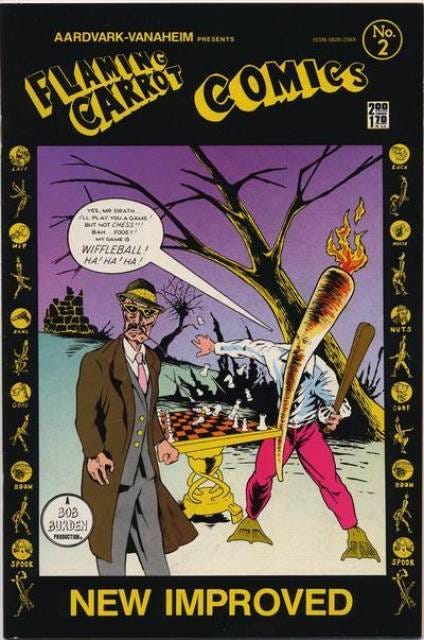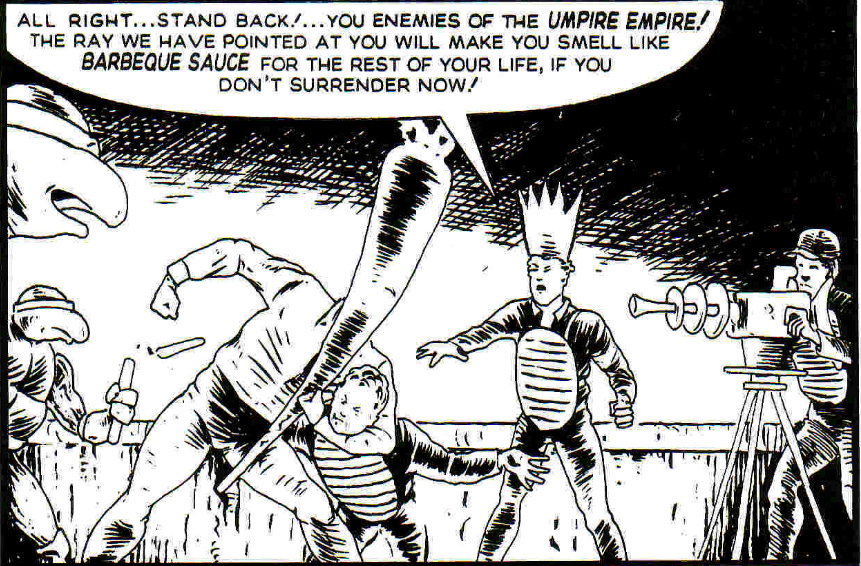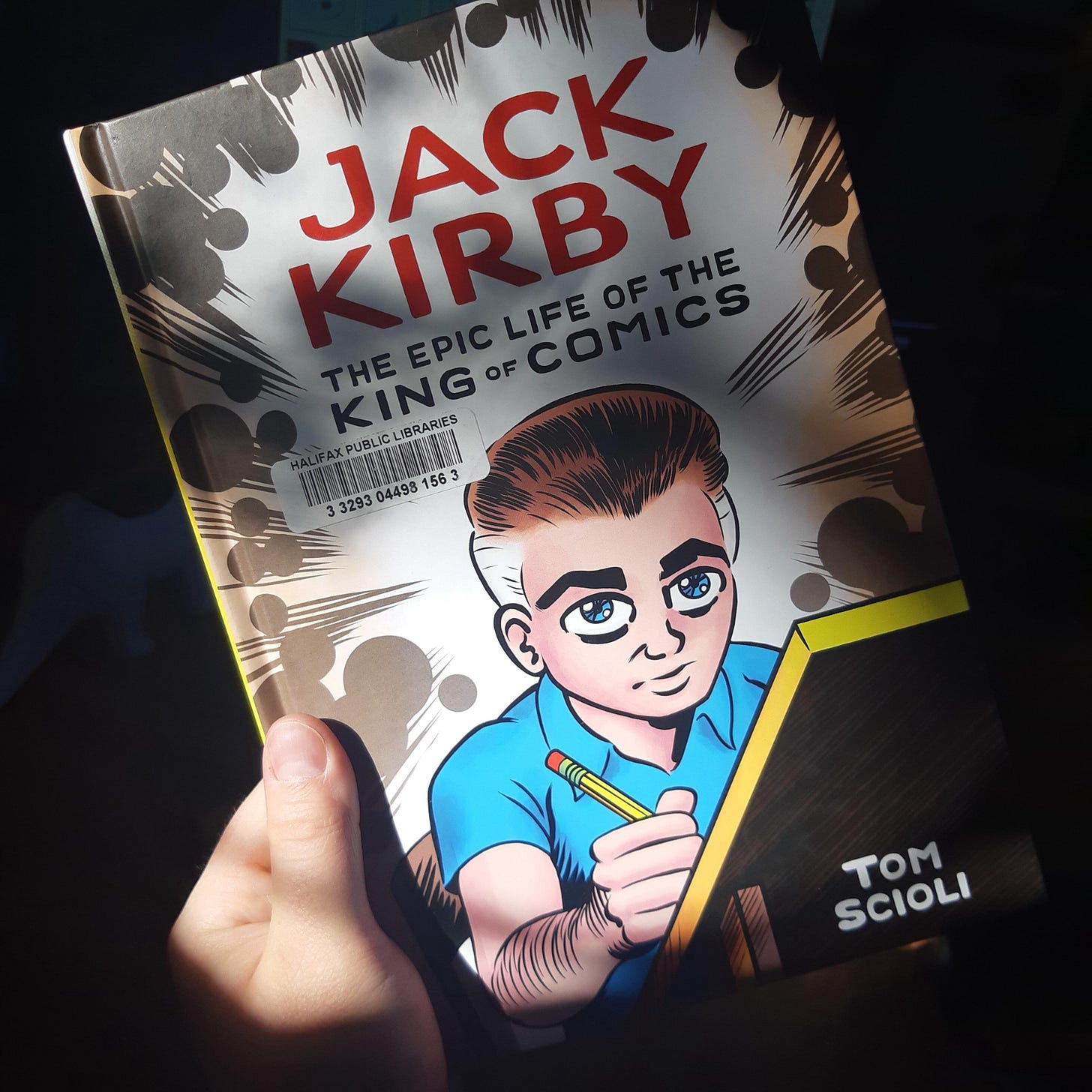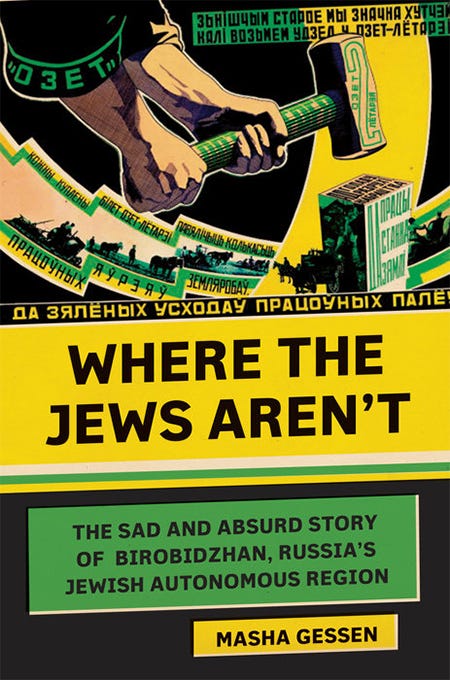Side Quest: Every Book I read in my 29th Year FINAL COUNTDOWN
The last of the books I read in my 29th year
Perla La Loca by Jaime Hernandez
Where I got it: Anyone Comics
The Locas enter the 90s broker, sadder, and more disparate than ever. Hopey bounces between couches and uncovers a lesbian adult baby fetish ring. Maggie wanders Texas and takes up some survival sex work. Izzy has cancer. Doyle, Ray, Danita, and the rest of the crew aren’t doing so well themselves. Despite this darkness, Hernandez’s love of his lost soul creations shines through. They search, they suffer, they question, they grow. This growth is what sets Love and Rockets apart– think of how pretty much every other comic character in the history of the medium is imprisoned to reset to the status quo issue after issue, decade after decade. There’s some particularly stunning sequences which blew my mind. The two page spread of various “Locas” characters slapping Maggie into an alternate history retelling of the past two volumes had my jaw on the floor. Ending with a striking scene of Maggie and Hopey finally reunited in the back of a police car had me itching to read the next volume.
Women by Charles Bukowski
Where I got it: Borrowed from Marissa
Bukowski earns his reputation as an alcoholic misogynist in Women, his 1978 loosely autobiographical novel. Henry Chianski, Bukowski’s fictional alter ego, has finally made it as a successful writer and uses his newfound acclaim to binge drink and sleep with about 15 women over the course of the novel. The women are mostly crazy and awful, but nowhere near as crazy and awful as Chianski himself. The vignettes of this book follow nearly identical patterns of booze lubricated seduction followed quickly by revulsion and rejection and pithy lines. Chianski’s increasing awareness of the emotionally desolate nature of his life provides this repetitive plot with some momentum. Women still manages to feel transgressive decades after its release, at times humorous, at times shocking, and always terrible.
Flaming Carrot Original Run by Bob Burden
Where I got it: uhhhh internet?
Bob Burden’s Flaming Carrot is an irreverent deconstruction of superheroism. Just take the origin story of this hero: a beat poet who read 5,000 comic books in one sitting, developed brain damage, and started fighting crime in a gigantic carrot mask that’s on fire and green flippers. This comic is absurdist black and white delight with enough non sequiturs per page to make even Salvador Dali’s head spin. Here’s a sample panel just to give you a taste:
Yes those are the Teenage Mutant Ninja Turtles off to the left! This book doesn’t get nearly enough love as a predecessor to better known wacky hero parodies like Madman or the Tick, or even the renaissance of indie comics in the 1990s and beyond. Perhaps it is because Burden’s art is… more inventive than refined to put it diplomatically. Flaming Carrot did inspire a pretty damn hilarious film adaptation Mystery Men, which has unfortunately faded into obscurity. Nerds— please help me spread the word about Bob Burden and Roxanne Star so we can get this revival going.
Jack Kirby: The Epic Life of the King of Comics by Tom Scioli
Where I got it: online order
Tom Scioli’s graphic novel biography is a fastidiously researched love letter to the greatest creator in the history of comics. I’ve long admired Scioli’s work on other projects. His art style is steeped in nostalgia, using watercolors and a retro inspired illustration style to capture the feeling of reading a faded old comic from a dollar bin. The best part of Scioli’s account of Kirby is his insight into Kirby’s process. Kirby’s pantheon of iconic superheroes didn’t emerge one afternoon in the 1960s. Instead, these characters were retooled, reimagined, and recontextualized over decades of work in the comic field until they found forms that stuck. Though no fault of Scioli’s, this book was infuriating. You can’t tell Kirby’s story without diving deep into the exploitation this creator experienced at the hands of the comic publishers who refused to give him proper credit and compensation for his work. His most famous and most odious collaborator/exploiter Stan Lee becomes Kirby’s real life arch nemesis over the course of the book. Because his creations were deeply meaningful to since childhood, reading about his struggles for recognition hit me particularly hard. The epilogue on the book touches on Kirby’s extreme influence on our current media landscape— nearly every lead character in the Marvel Cinematic Universe is his creation. Would Kirby be thrilled to see his work rise to such eminence? Or would it be another painful reminder of how he was denied the fruits of a lifetime of labor?
The Big Sleep by Raymond Chandler
Where I got it: NYPL
Raymond Chandler’s debut novel is packed with the delightful turns of phrase one expects from a noir detective tale. His eternally cool PI Phillip Marlowe narrates this convoluted mystery puzzle, connecting the dots from seedy corners of the underworld of a surprisingly rainy Los Angeles. Having seen the 1946 film, it’s mandatory to read this book with a mental casting of Humphrey Bogart as Marlowe (this is not a bad thing). The book provides more clarity than famously confusing film adaptation penned by William Faulkner, however it’s still easy to miss major details if you’re reading casually on the subway. The ending is also different in the book— less dramatic, but more satisfying.
Annihilator by Grant Morrison & Frazer Irving
Where I got it: NYPL
Everything Grant Morrison writes is mind blowing, but this one is… above average mind blowing? Annihilator is a deliciously meta tale of the satanist space outlaw Max Nomax, who has fired a memory data bullet into the head of wannabe satanist Hollywood burnout Ray Spass. As these things go, Spass has to write Nomax’s tale to unlock his lost memories and save the universe from the Annihilators of space god Vada. The book is Legendary, so it’s cool to see Morrison unchained by the prudishness of Marvel & DC. There’s even more sex and drugs than usual. Two things I loved about this book: first, it’s fascinating to see Morrison reimagine their Fantomex character from New X-Men as Max Nomax. Both are overpowered, ingenious, mysterious, and have a sketchy relationship to the pulpy characters that inspired them. Second, having just read Jack Kirby’s biography, I can’t help but think this is the kind of cosmic comic Kirby would have dreamed of making.
Sex at Dawn by Christopher Ryan & Caclida Jetha
Where I got it: borrowed from Marissa
The 2010 book Sex at Dawn is an irreverently enlightening dismantling of the evolutionary myths around human sexuality. Authors Ryan and Jetha use evidence both from human cultures around the globe and our evolutionary cousins chimps and bonobos to argue that humans did not in fact evolve to a lifestyle of monogamy– instead we are wired for promiscuity. I learned so much reading this book, plenty of it I did not expect to learn. Did you know there are cultures who believe that babies are made through semen accumulation from multiple partners? I learned about that and plenty of other bizarre facts about semen reading this book. This book is also great for dragging scientific giants like Jane Goodall and Charles Darwin, with provocative titles like “Charles Darwin thinks your mother is a whore.” Thanks to my old friend Austin Adkins for the rec.
American Splendor: Another Dollar by Harvey Pekar
Where I got it: Housing Works Bookstore
Harvey Pekar stays crotchety in this volume of American Splendor, his long running autobiographical series that’s won its place in the heart of indie comics fans. Like all American Splendor comics, Pekar devotes his pages to the quotatidian: income tax returns, doctor’s appointments, repairs for his Geo Prizm. No offense to Harvey, but the best part of these volumes is always seeing his words interpreted by various artists! This volume was extra special because it contains work from three artists whose work I adore: Ed Piskor, Sean Murphy, and the late legend Darwyn Cooke.
Where the Jews Aren’t: The Sad Absurd Story of Birobidzhan, Russia’s Jewish Autonomous Region
Where I got it: Unoppressive, Non-Imperialist Bargain Books
The New Yorker’s Masha Gessen pens a compelling tale of a place lost to history: Birobidzhan, the Jewish Autonomous Region in the Soviet Union. Gessen anchors this tale in the biography of David Bergelson, an influential Yiddish writer who became a pawn of the Soviet Union and ultimately its victim. Bergelson’s job in the USSR was to promote Birobidzhan, a Soviet outpost designated for Jews which by all accounts was a terrible place. The USSR would spend decades alternating between shipping Jews to to Birobidzhan and purging them, complete with book burnings, show trials, and all kinds of Soviet awfulness. Gessen’s writing captures Birobidzhan with both sadness and humor, with all of the gravitas of a writer who emigrated from Russia to escape persecution themself.
That’s all folks! Every book I read at age 29. Thanks a ton for reading and let me know your recommendations for year 30 in the comments! Back to your regularly scheduled book posts soon!












